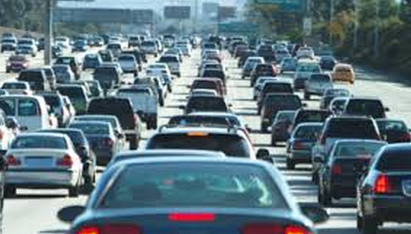DOT Report Points to Need for More Green Transit Alternatives
The findings of a new report issued by the Department of Transportation entitled “Beyond Traffic 2045: Trends and Choices,” paints a potentially troubling picture as it relates to how we travel and underscores the need for far more green transit alternatives to be implemented.
Let’s start with the demographics: Over the past 30 years the American population has increased 35 percent—from 230 million to 320 million. What’s more, by 2045 our population is expected to increase by nearly 70 million.
As the document aptly queries: “How will we accommodate 70 million more people and growing amounts of freight—with an aging transportation system that is already strained for capacity?”
What’s more, as our suburbs and exburbs have grown, as a nation we are more dependent than ever on cars. But, our travel patterns are shifting. Simply put, we have more cars but per capita vehicle miles traveled – a measure of how much people actually drive – began to drop starting in 2006.
 The report notes, “Despite this trend, traffic congestion remains high, particularly in large urban areas. By some calculations, the average auto commuter in urban areas spends the equivalent of five vacation days each year delayed by traffic.” Ouch.
The report notes, “Despite this trend, traffic congestion remains high, particularly in large urban areas. By some calculations, the average auto commuter in urban areas spends the equivalent of five vacation days each year delayed by traffic.” Ouch.
“Throughout the 1980s and 1990s, Americans spent more and more of their time in cars as commute lengths increased and traffic grew. Personal vehicle travel increased as a share of all travel; carpooling, transit, and walking all declined.”
More recently, driving became more affordable as the cost of cars and gas fell relative to other costs and fuel economies improved. Layered on top of this, “more Americans entered the workforce, especially women, and the boundaries of metropolitan areas expanded. The population of the suburbs increased and rural areas on the fringe of metropolitan areas became exurbs.”
Meanwhile, the population of cities stagnated. Commutes grew in distance and commuters spent more time in traffic.
Perhaps bright spot or a heavy dose of reality: The report noted: “If over the next 30 years, Americans continue to drive less it could mean less pollution and less congestion. It could also reduce gas tax revenues making it difficult to maintain our roads and bridges. It might also mean that we have learned to live with an inadequate, congested transportation system by traveling less.”
In fact, high levels of congestion may be spurring some Americans to make different choices about where they live and how they get around.
Category: General Update, Green











